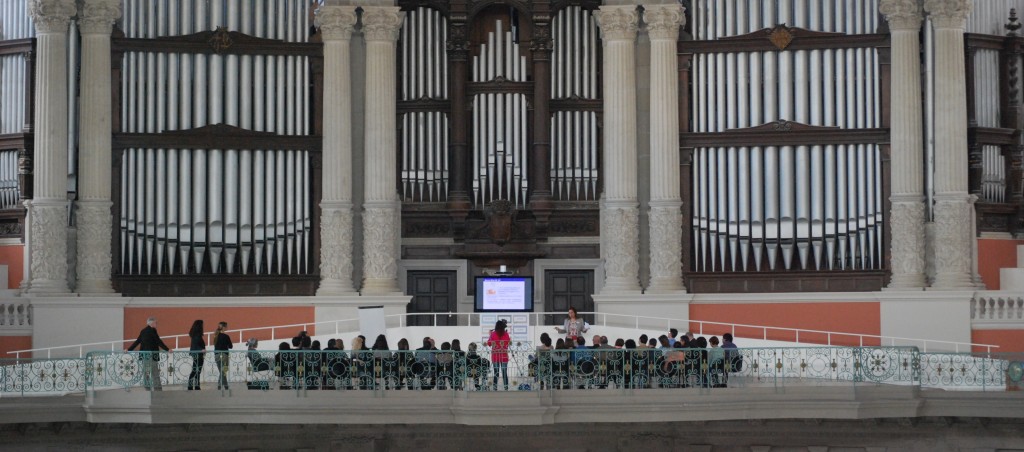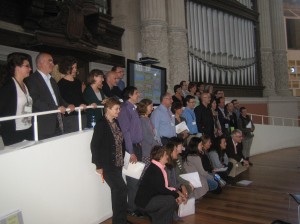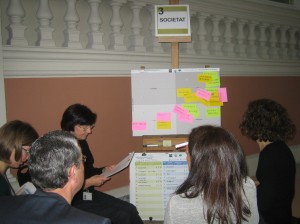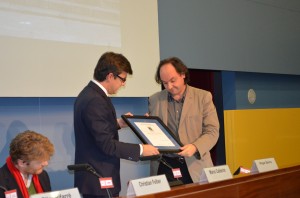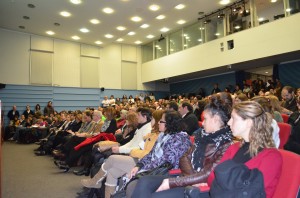Josep M. Carreté
This article is the follow-up of Thoughts on management: reflection and practice in the Museu Nacional d’Art de Catalunya /1.
The Museu Nacional, in the renovation process of its management, made a commitment towards the implementation of three main projects:
E-administration
The first project has required a gradual economic investment so as to have the necessary IT and management tools for going ahead with the introduction of the electronic administration. It is a long process. The setting in motion has been, and continues to be, complicated, given the current economic difficulties. It is, however, for us, a clear commitment towards the simplification and modernization of processes and, as we will see, an absolutely complementary solution to the processes of Social Responsibility.
Management by projects
The second, working by projects, known for many years within the world of management, is allowing us to make the organisation chart of the museum more flexible and to pass on the responsibility for the coordination of each of the projects to different people, irrespective of their hierarchical position. This is allowing us to work with a flatter structure and in a much more transversal way.
The added value of working by projects is well known. It’s a matter of introducing things which are so obvious but at the same time, so important, as:
- teamwork
- dealing with projects by making different areas and people involved participate from the outset
- identifying key projects
- establishing processes of continual improvement
- and, the most essential one, getting the maximum number of staff to be involved in, and to commit themselves towards, the day-to-day running of the museum, and the future of the museum
Social Responsibility
The third project, and most integral within the field of management, has been the setting in motion of the process that led us to achieve, in 2013, the European certification of Social Corporate Responsibility IQNEet SR10. The Museu Nacional was the first cultural institution of the State to obtain this certification.
We consider that it is an essential tool for contributing towards sustainable development, and for carrying out our activity according to the internationally recognized principles of social responsibility: accountability, transparency, ethical behaviour, respect for our interest groups, respect for the principle of legality and the international regulations of behaviour and respect for human rights.
It’s based on the known principle in the business world of Plan-Do-Check-Act. This system includes a self-evaluation that, in the same way as in the management by projects, leads us to a process of continual improvement in the milestones that we want to reach. Currently we are working on the three vectors of sustainability: economic, social and environmental. This management system, very similar to the systems of total quality, is differentiated in terms of the participation of all the interest groups related to the museum and because the goals have to be subject to the Ethic code [pdf] and to the Policy of Social Responsibility [pdf] which affect and condition all the actions that we subsequently want to implement through the day-to-day management.
Recently a Social Council has been constituted. It is made up of a large representation of workers from the museum and representatives are being incorporated from our different interest groups (suppliers and providers, sponsors, public administrations, users, neighbours, etc.). The function of the Social Council is fixing new objectives and evaluating the degree of achievement established beforehand. Apart from these systems of participation and evaluation, everything is also evaluated by an external audit, the aim of which being to ensure the functioning of the system in a global way and that obliges us to carry out an ongoing work so as to maintain the European accreditation of social responsibility.
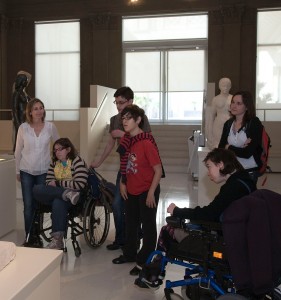
The museum’s community programmes aime to widening the access to culture
To consolidate this management model, we will shortly be taking one step further by allocating a technical staff from the museum to carry out the follow up of the implementation of the management by projects and of the system of Social Responsibility. Throughout this time we have been able to highlight the fact of how the everyday work and the urgencies can, on occasions, impede the implementation of improvements. Therefore, the work of this person will consist of carrying out the tasks of analysis and evaluation of the projects so as to ensure that the conclusions and improvements reached can return back into the organization. Furthermore, this figure will be responsible for the implementation of the system of Social Corporate Responsibility in which museum staff have deposited a large amount of energy and great expectations with regard to the improvement in the internal functioning and the future positioning of the museum within the cultural, social, economic and environmental field.
To conclude, I would like to say that with the implementation of the e-administration and with the new management tools that we are providing ourselves with, these are helping the museum to achieve the goals established in our Strategy 2013-2017. All in all, it should allow the Museu Nacional d’Art de Catalunya to be able to increase the quality and outreach of the services we offer to our visitors on a day-to-day basis, and to improve the positioning of the museum within the cultural, social and economic world of the country.
Recommended links:
The National Art Museum of Catalunya: and Corporate Social Responsibility, Quorum 2015
Responsabilitat Social Corporativa: un nou model de gestió, (Corporate Social Responsibility: a new management model) in the programme “Valor afegit” (“Added Value”), TV3, 2015 (video 14 min., in Catalan)
Reduction of energy consumption in our museum (Slideshare)
Museu Nacional Strategy 2013-2017 (pdf, in English)
Sotsdirector-gerent

